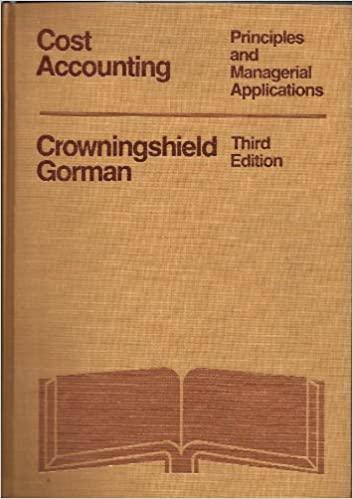Question
Gamma prepares its financial statements to 30 September each year. Notes 1 and 2 contain information relevant to these financial statements: Note 1 Purchase of
Gamma prepares its financial statements to 30 September each year. Notes 1 and 2 contain information relevant to these financial statements: Note 1 Purchase of equity shares in a key supplier On 1 October 20X6, Gamma purchased 200,000 equity shares in entity A, a key supplier. Entity As shares are listed on the local stock exchange. This share purchase did not give Gamma control or significant influence over entity A but Gamma intends to retain the shares in entity A as a longterm strategic investment. Gamma paid $240 per share for these shares. This amount represents their fair value at the date of purchase. Additionally, brokers charge a fee of 2% of the amounts paid to buy or sell a share on the stock exchange on which entity As shares are quoted. On 31 March 20X7, entity A paid a dividend of 25 cents per share. For the last few years entity A has made just one dividend payment each year, in the month of March. On 30 September 20X7, information received from the local stock exchange regarding entity As share price was: Brokers bid price (the price the broker will pay to buy a share) $270 per share. Brokers ask price (the price which the broker requires when selling a share) $290 per share. Note 2 Jointly manufactured product On 1 October 20X6, Gamma entered into an agreement with entity B to manufacture and sell a product. Under the terms of the agreement, pricing decisions, manufacturing specifications and selling decisions must be agreed by both entities. Any relevant obsolescence risk or bad debt risk is jointly borne by both entities. Entity B completes the first stage and the partially manufactured product is then transferred to Gamma who completes the manufacture and delivers the product to the customer. Gamma invoices the customer and collects payment. Entity B receives no payment for the goods they have manufactured until they are sold and the customer has paid Gamma. Revenue from the sale of the completed product is shared equally between Gamma and entity B. Each month Gamma pays entity B its share of any amounts received from customers in the previous month. Under the terms of the agreement, the payments to entity B must be made within two weeks of the end of each month. Financial data relevant to the agreement for the year ended 30 September 20X7 is as follows: Relating to the manufacture of the product: Entity B Gamma $m $m Manufacturing costs 8 7 Inventories at 30 September 20X7 2 38 (note (i)) Relating to the sale of the product: $m Revenue 22 Trade receivables at 30 September 20X7 (note (ii)) 5 Bad debts written off (note (iii)) 01 Notes: (i) $21 million of this cost related to costs incurred by entity B and $17 million related to costs incurred by Gamma. All inventory is measured using IAS 2 Inventories. (ii) Amounts received from customers during September 20X7 were $15 million. (iii) No further bad debts are expected. Required: Explain and show how the two events detailed in notes 1 and 2 would be reported in the financial statements of Gamma for the year ended 30 September 20X7. Where alternative reporting treatments are permitted in note 1, you should explain and show both alternatives. Marks will be awarded for BOTH figures AND explanations
Step by Step Solution
There are 3 Steps involved in it
Step: 1

Get Instant Access to Expert-Tailored Solutions
See step-by-step solutions with expert insights and AI powered tools for academic success
Step: 2

Step: 3

Ace Your Homework with AI
Get the answers you need in no time with our AI-driven, step-by-step assistance
Get Started


